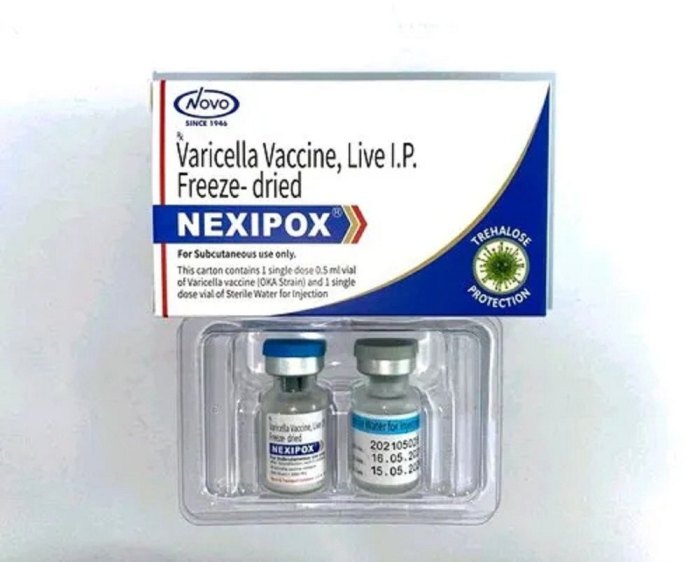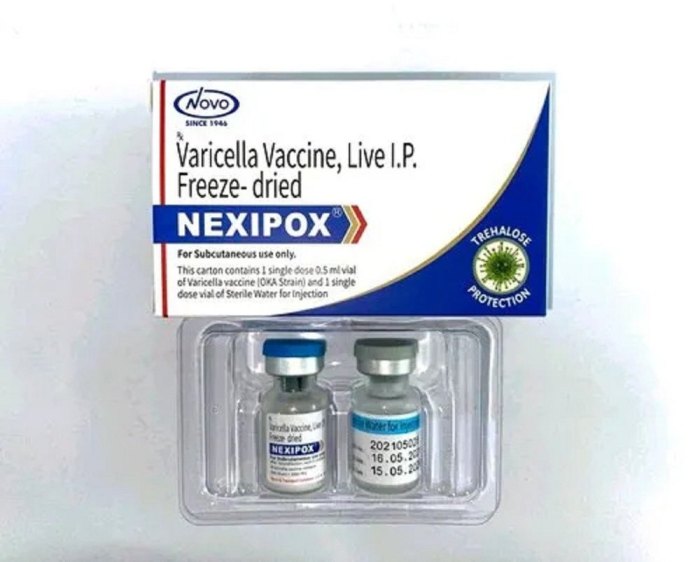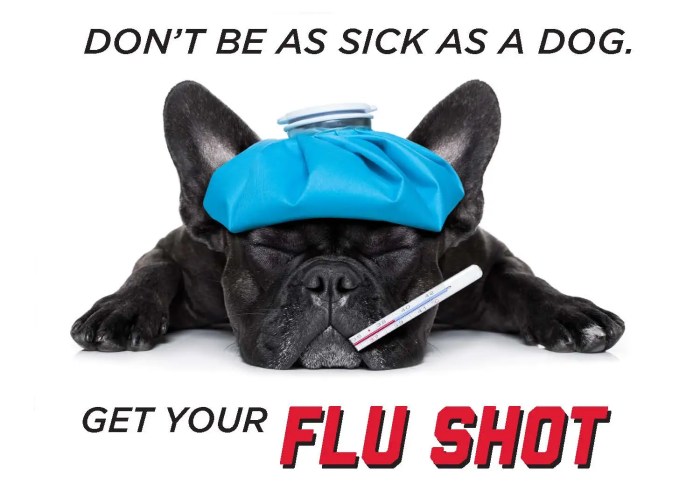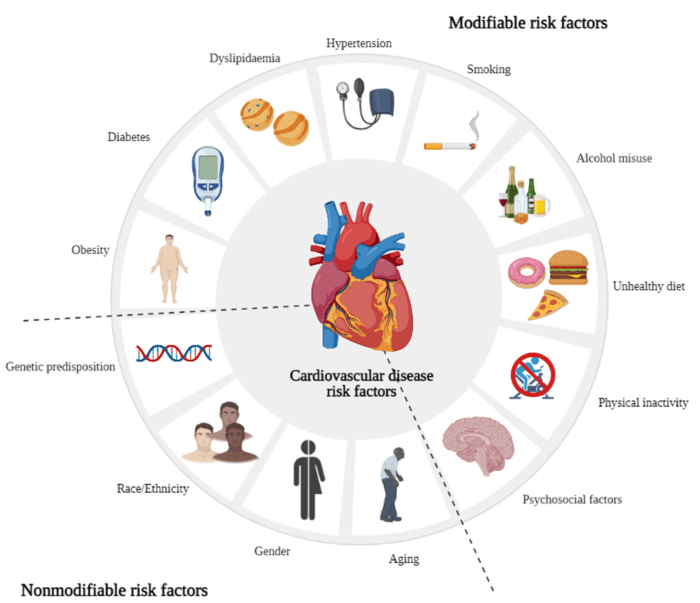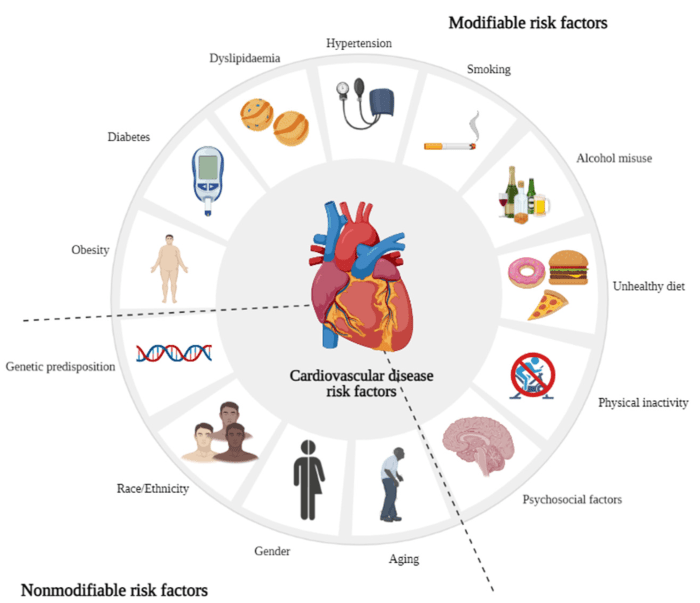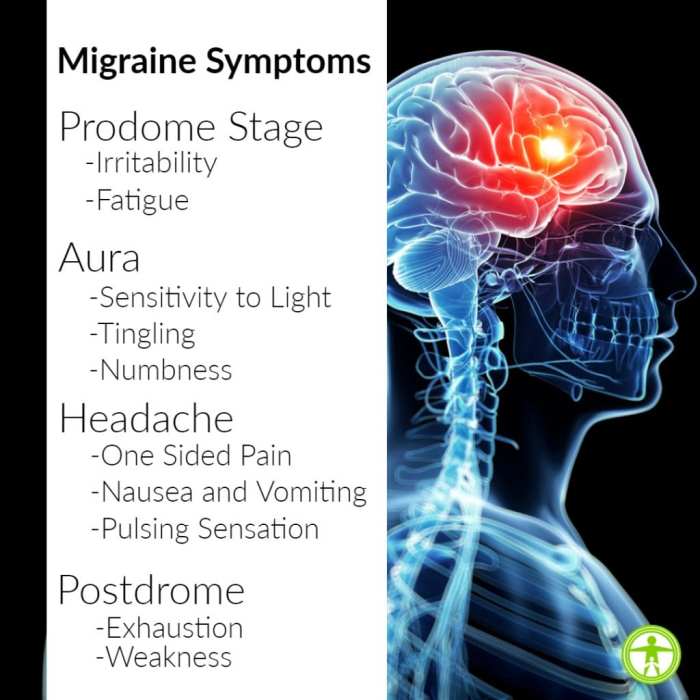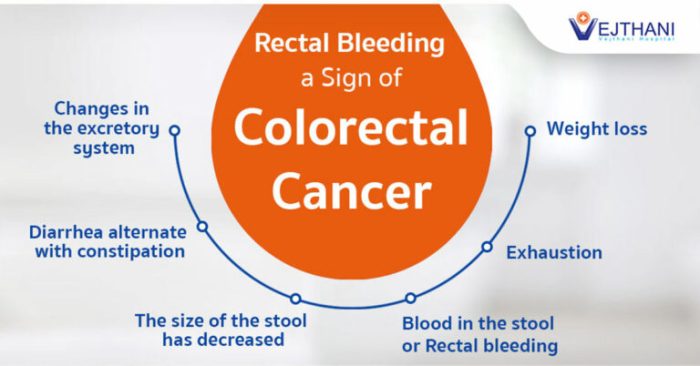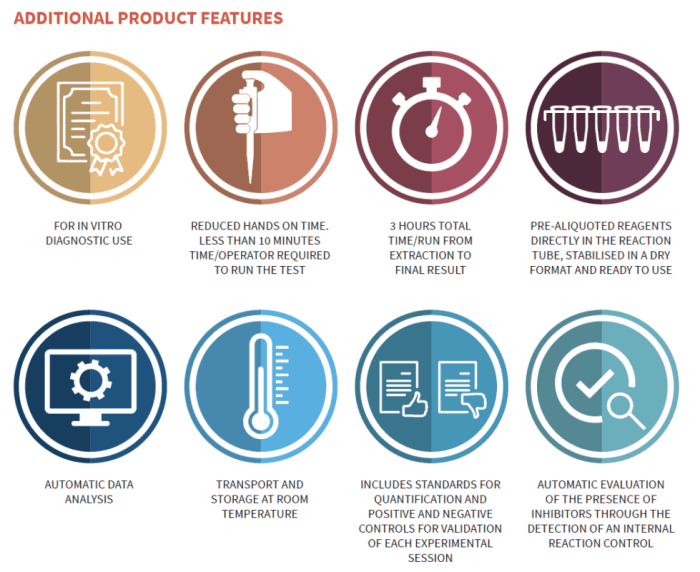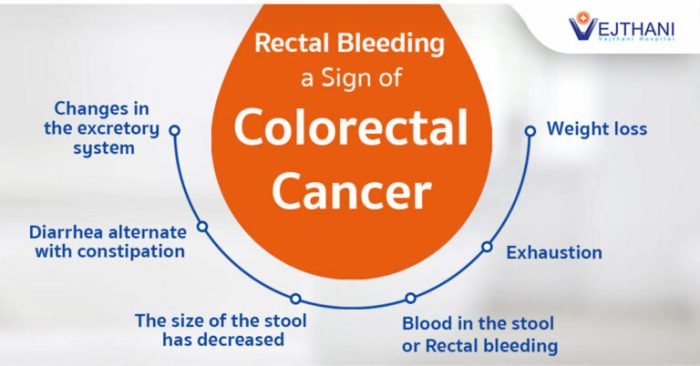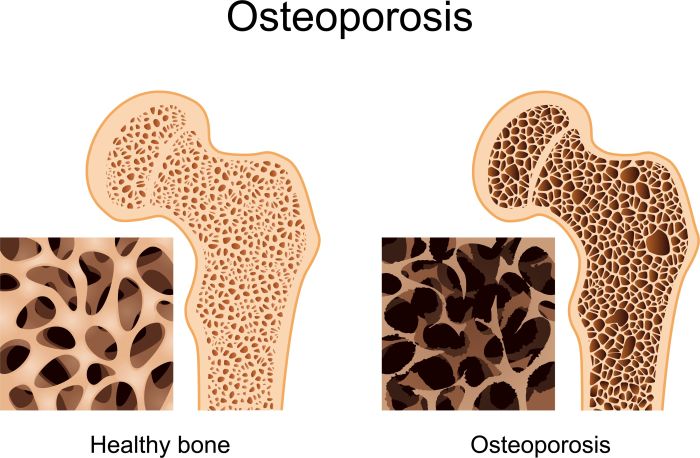Sinus infection or migraine: understanding the often-confused conditions. Both sinus infections and migraines can cause debilitating pain, but their origins and treatment differ significantly. This exploration delves into the symptoms, diagnosis, treatment approaches, and preventive measures for each, emphasizing the critical need for accurate diagnosis to ensure appropriate care. The overlap in symptoms can make distinguishing between them challenging, but a thorough understanding of the specifics is crucial for effective management.
This comprehensive guide explores the nuanced differences between sinus infections and migraines. We’ll examine common symptoms, diagnostic procedures, and treatment options, with a focus on the unique characteristics of each condition. Moreover, we’ll discuss preventative strategies and when to seek immediate medical attention. Whether you’re experiencing symptoms yourself or are a caregiver, this information can help you navigate the complexities of these conditions.
Sinus Infections and Migraines: Overlapping Symptoms and Diagnosis

Sinus infections and migraines, while distinct conditions, often share similar symptoms, leading to diagnostic challenges. Both can cause debilitating pain, facial pressure, and a range of other discomforts, making accurate identification crucial for effective treatment. Understanding the overlapping characteristics and the importance of a proper diagnosis is key to managing these conditions effectively.These conditions significantly impact daily life, affecting work productivity, social interactions, and overall well-being.
The prevalence of both sinus infections and migraines underscores the need for a thorough understanding of their unique symptoms and how they can sometimes mimic one another. Accurate diagnosis ensures the right treatment plan is followed, preventing unnecessary suffering and potential complications.
Common Symptoms of Sinus Infections and Migraines
Both sinus infections and migraines present with a range of symptoms, some of which overlap significantly. Common symptoms include throbbing or persistent head pain, facial pain or pressure, and sensitivity to light and sound. These overlapping symptoms can make distinguishing between the two conditions difficult. Accurate diagnosis requires a comprehensive evaluation of all presenting symptoms and medical history.
Prevalence and Impact of Sinus Infections and Migraines
Sinus infections are common, affecting millions annually. They are typically caused by viral infections, but can also be bacterial or fungal. The impact on daily life can range from mild discomfort to severe pain and disability. Migraines, another prevalent condition, are characterized by moderate to severe headache pain, often accompanied by nausea, vomiting, and sensitivity to light and sound.
Their impact can vary significantly from person to person, impacting work, school, and social life.
Overlapping Symptoms and Diagnostic Challenges
The overlapping symptoms between sinus infections and migraines present a significant diagnostic challenge. Both can cause facial pain, pressure, and headache. Furthermore, both can be accompanied by fever, nasal congestion, and fatigue.
Accurate diagnosis hinges on a careful evaluation of the complete symptom picture and a thorough medical history. Consideration of potential contributing factors, such as recent illnesses or environmental triggers, is also important.
Importance of Accurate Diagnosis for Treatment
Misdiagnosis can lead to inappropriate treatment, delaying effective relief and potentially causing complications. A proper diagnosis allows for the development of a tailored treatment plan that addresses the specific cause of the condition. For example, antibiotics are essential for bacterial sinus infections, while migraine treatments may involve pain relievers, preventive medications, or lifestyle modifications.
Sometimes, it’s tough to tell if you have a sinus infection or a migraine. Both can cause intense headaches and facial pain. Interestingly, the way you eat might play a role in managing chronic conditions like chronic pancreatitis, which can impact your overall health, influencing things like your susceptibility to sinus infections or migraines. Learning about dietary changes for better management of chronic pancreatitis can help alleviate symptoms and improve your overall health.
This can be very helpful in cases of sinus infection or migraine. For more insights into diet and chronic pancreatitis, check out this informative article: diet and chronic pancreatitis.
Diagnostic Considerations
Accurate diagnosis involves considering the duration and intensity of symptoms, location of pain, and associated symptoms. A physical examination, including nasal examination, is essential to assess for signs of inflammation or infection. Diagnostic tests such as imaging studies (e.g., CT scans) or nasal swabs may be necessary in some cases to differentiate between sinus infections and migraines.
Symptoms and Diagnosis

Pinpointing the difference between a sinus infection and a migraine can be tricky, especially since both conditions can cause head pain. Understanding the nuances in symptoms, particularly how they manifest in different age groups, and the diagnostic methods used can significantly aid in accurate identification and treatment. A thorough evaluation considering all symptoms and medical history is crucial for proper diagnosis.The overlapping symptoms of sinus infections and migraines often lead to diagnostic challenges.
Both can result in headaches, facial pressure, and fatigue. However, key differences exist in symptom presentation, which aid in distinguishing between the two. Recognizing these differences, especially in children and adults, and employing appropriate diagnostic methods, such as physical examinations and imaging, are vital for prompt and effective treatment.
Comparing Common Symptoms
Common symptoms, like headaches, are often shared between sinus infections and migraines. However, a closer look reveals key distinctions in other symptoms. The presence or absence of specific symptoms can help narrow down the diagnosis.
Symptom Presentation in Different Populations, Sinus infection or migraine
The presentation of symptoms varies significantly between children and adults. Children often experience more generalized symptoms, such as fever, irritability, and malaise, while adults may exhibit more focused symptoms, such as throbbing pain and nausea. This difference in symptom presentation emphasizes the importance of considering the patient’s age when evaluating potential causes.
Diagnostic Methods
Several diagnostic methods are used to differentiate between sinus infections and migraines. These methods include a comprehensive medical history, a thorough physical examination focusing on the head, neck, and nasal passages, and diagnostic imaging (e.g., CT scans or X-rays) to visualize potential sinus inflammation. Laboratory tests, such as blood tests, can also be employed to rule out other conditions.
A detailed evaluation of symptoms, coupled with physical examination and appropriate imaging, helps in differentiating between the two conditions.
Symptom Likelihood Table
| Symptom | Sinus Infection | Migraine | Both |
|---|---|---|---|
| Headache | Yes (often a dull, persistent ache) | Yes (often a throbbing, pulsating pain) | Yes |
| Facial pain | Yes (often localized to the affected sinus area) | No | No |
| Fever | Yes (often accompanied by chills) | No | No |
| Nasal congestion | Yes (runny nose, nasal discharge) | No | No |
| Nausea/Vomiting | Possible, but less common | Common | Possible (more often with migraine) |
| Sensitivity to light/sound | Possible, but less common | Common | Possible (more often with migraine) |
This table summarizes the likelihood of different symptoms in each condition. Note that individual experiences can vary, and not all symptoms will be present in every case. It’s crucial to consider the entire clinical picture for an accurate diagnosis.
Treatment Approaches
Navigating sinus infections and migraines often involves a multifaceted approach. Understanding the various treatment options available is crucial for managing these conditions effectively. This section delves into the typical treatments for both conditions, comparing their efficacy and potential side effects.The treatment for sinus infections and migraines differs significantly, even though both can cause considerable discomfort. The best approach is tailored to the specific cause and severity of the symptoms.
Ugh, sinus infections or migraines are the worst! They can knock you right off your feet, leaving you miserable. Sometimes, it’s hard to tell if it’s one or the other, especially when you’re also dealing with PCOS. Learning some ovulation kit tips for PCOS patients, like how to interpret your results or when to take them, can really help you get a handle on your cycle and potentially reduce symptoms related to hormonal fluctuations.
Knowing the difference between those hormonal fluctuations and a sinus infection or migraine can be a real game-changer, allowing you to get the right treatment. ovulation kit tips for pcos patients can help you decipher your body’s signals, which can lead to better overall health.
While pain relievers are common for both, more targeted treatments exist for each condition.
Treatments for Sinus Infections
Sinus infections, often bacterial in nature, typically respond well to antibiotic therapy. Antibiotics are designed to eliminate the bacteria causing the infection. This treatment aims to resolve the infection quickly, reducing inflammation and relieving symptoms. Examples of antibiotics commonly prescribed include amoxicillin, augmentin, and cephalexin. However, it’s important to note that some sinus infections may be viral and not respond to antibiotics.
In such cases, symptomatic relief is the primary focus.
Pain Relievers for Both Conditions
Over-the-counter pain relievers like ibuprofen and acetaminophen are frequently used to alleviate pain and reduce fever associated with both sinus infections and migraines. These nonsteroidal anti-inflammatory drugs (NSAIDs) help decrease inflammation. Acetaminophen, on the other hand, primarily targets the pain and fever aspects without directly reducing inflammation. The choice between these medications often depends on individual tolerance and the specific symptoms being experienced.
It’s essential to follow the recommended dosage instructions carefully to avoid potential side effects.
Treatments for Migraines
Migraines, characterized by severe throbbing headaches, are often managed using a range of medications. Triptans are a class of medications specifically designed to target the neurochemical processes associated with migraine pain. They are frequently effective in reducing the intensity and duration of migraine attacks. Other approaches may include over-the-counter pain relievers, and preventive medications, which aim to reduce the frequency and severity of migraines over time.
Comparing Efficacy and Side Effects
The efficacy and side effects of different treatment options can vary significantly. Antibiotics, when appropriate, generally provide rapid relief from bacterial sinus infections. However, they can sometimes cause side effects like nausea and diarrhea. Triptans are typically highly effective in managing migraine attacks, but some individuals experience side effects like nausea, dizziness, and tingling sensations. Over-the-counter pain relievers offer a generally safe and effective way to alleviate mild to moderate pain, but their efficacy may be limited for severe cases.
It’s crucial to consult a healthcare professional to determine the most appropriate treatment plan for individual circumstances.
Ugh, sinus infections or migraines are the worst! They can really mess with your head, and sometimes it’s hard to tell if it’s one or the other. Interestingly, some overlapping symptoms can be linked to other health conditions, like the various side effects of diabetes, which can include headaches. Knowing the potential connections between these conditions can help you get a better understanding of your own body.
If you’re concerned about any of these symptoms, always consult a healthcare professional. side effects of diabetes can be quite diverse, and it’s important to rule out any underlying issues, especially if you’re dealing with persistent sinus pain or migraines.
Summary of Treatment Options
| Condition | Treatment Option | Description | Potential Side Effects |
|---|---|---|---|
| Sinus Infection | Antibiotics | Treat bacterial infections, reducing inflammation | Nausea, diarrhea, allergic reactions (rare) |
| Migraine | Triptans | Reduce pain and inflammation associated with migraines | Nausea, dizziness, tingling sensations |
| Both | Over-the-counter pain relievers (NSAIDs and acetaminophen) | Alleviate pain and fever | Gastrointestinal upset, allergic reactions (rare) |
Prevention and Management
Sinus infections and migraines, while distinct conditions, often share overlapping symptoms and treatment approaches. Effective prevention and management strategies focus on understanding and addressing the underlying factors that contribute to these issues. This involves lifestyle adjustments, proactive measures, and recognizing the importance of consistency.
Preventative Measures for Sinus Infections
Preventing sinus infections involves minimizing irritants and strengthening the body’s natural defenses. A crucial aspect is maintaining a healthy immune system. This can be achieved through a balanced diet rich in fruits, vegetables, and whole grains, ensuring adequate hydration, and regular exercise. Avoiding exposure to allergens and irritants, such as smoke and dust, is also vital. Proper hygiene practices, including regular handwashing, can help prevent the spread of infections.
Finally, seeking prompt treatment for colds or other upper respiratory infections is essential to prevent them from progressing into sinus infections.
Preventative Measures for Migraines
Migraines, characterized by severe headaches, can be significantly influenced by various factors. Identifying and avoiding triggers is crucial in preventing migraines. Common triggers include stress, lack of sleep, certain foods, and environmental factors. Regular sleep schedules, stress-reduction techniques, and mindful dietary choices can help manage and reduce migraine frequency.
Strategies to Manage Symptoms
Effective symptom management for both sinus infections and migraines involves a multi-faceted approach. This includes administering prescribed medications, using over-the-counter pain relievers as directed, and employing techniques to alleviate discomfort. Heat packs or cold compresses can provide temporary relief for pain. Rest is essential for both conditions, allowing the body to heal and recover.
Lifestyle Factors in Prevention and Management
Lifestyle plays a pivotal role in both preventing and managing sinus infections and migraines. Consistency in healthy habits is key to long-term well-being. The following lifestyle adjustments can significantly contribute to minimizing the risk and severity of both conditions.
Lifestyle Adjustments
- Hydration: Staying well-hydrated supports overall bodily functions, including immune system function. Proper hydration helps thin mucus, which can aid in sinus drainage. Adequate hydration also helps regulate bodily processes, potentially reducing the impact of migraine triggers.
- Stress Management: Chronic stress can weaken the immune system, increasing susceptibility to infections. Stress can also be a significant migraine trigger. Employing stress-reduction techniques, such as meditation, deep breathing exercises, or engaging in relaxing activities, can significantly contribute to managing both conditions.
- Adequate Sleep: Sufficient sleep allows the body to repair and rejuvenate. Sleep deprivation weakens the immune system, making individuals more vulnerable to sinus infections. Adequate sleep is also crucial in regulating mood and reducing the risk of migraines. A regular sleep schedule is beneficial.
- Regular Exercise: Regular physical activity strengthens the immune system and improves overall health. Exercise can help reduce stress levels and improve sleep quality. These benefits can contribute to reducing the risk of both sinus infections and migraines. A balanced exercise routine can be tailored to individual preferences and fitness levels.
When to Seek Medical Attention: Sinus Infection Or Migraine
Sometimes, sinus infections and migraines can be managed at home with over-the-counter medications and rest. However, there are situations where immediate medical attention is crucial to prevent serious complications. Knowing the warning signs can help you get the right care promptly.Seeking timely medical attention for sinus infections or migraines is essential for effective management and to rule out potentially more serious underlying conditions.
Early intervention can prevent complications and ensure the best possible outcome.
Signs Requiring Immediate Medical Attention for Sinus Infections
Understanding the severity of a sinus infection is critical for determining when medical intervention is necessary. The following situations demand immediate medical attention:
- Severe, persistent facial pain that is significantly impacting daily activities. This pain may radiate to the teeth or temples and can be accompanied by fever, or worsening congestion.
- High fever (101°F or higher) that persists for more than a day, or a fever that is accompanied by other concerning symptoms like chills or sweats.
- Signs of infection spreading beyond the sinuses, such as a persistent headache, pain in the eyes, or swelling around the eyes or face.
- Difficulty breathing or shortness of breath. This can be a sign of a more serious infection or complication.
- Changes in vision or double vision, as these could indicate potential complications related to the sinuses or the brain.
- Severe headache that worsens despite over-the-counter pain relievers.
- Stiff neck or difficulty moving the neck, which could indicate a more serious infection or a possible complication affecting the brain.
Signs Requiring Immediate Medical Attention for Migraines
Recognizing the red flags of a migraine that warrants immediate medical attention is crucial for timely intervention and to rule out serious conditions.
- Severe, persistent headache that is significantly impacting daily activities, accompanied by neurological symptoms such as numbness, weakness, or vision changes.
- High fever, especially if accompanied by other concerning symptoms like stiff neck, confusion, or difficulty speaking.
- Sudden onset of a severe, debilitating headache accompanied by a rapid and significant decline in consciousness or alertness.
- A headache that is significantly different from previous migraines, especially in terms of intensity, location, or accompanying symptoms.
- Difficulty speaking or understanding speech, or weakness in one side of the body.
- Vision changes, including double vision, loss of vision, or seeing flashing lights.
- Numbness or tingling in the face, arms, or legs.
- Stiff neck, especially if accompanied by headache and fever.
Red Flags for Both Conditions
Certain symptoms are common to both sinus infections and migraines, making accurate diagnosis and timely intervention essential. The following symptoms require immediate medical attention for both conditions:
- Severe, persistent headache: A headache that is unusually intense, lasts for extended periods, or doesn’t respond to over-the-counter pain relievers demands immediate evaluation.
- High fever: A sudden rise in body temperature above 101°F (38.3°C) accompanied by other symptoms like chills, sweats, or headache requires prompt medical attention.
- Stiff neck: Difficulty moving the neck, often accompanied by headache or fever, could indicate a serious underlying condition.
- Confusion: Changes in mental status, such as disorientation, difficulty concentrating, or loss of consciousness, necessitate immediate medical attention.
Case Studies (Illustrative Examples)
Understanding the overlap between sinus infections and migraines can be tricky. Symptoms often mimic each other, making diagnosis challenging. Real-life case studies highlight the importance of a thorough evaluation and the potential pitfalls of misdiagnosis. Careful consideration of a patient’s medical history, physical examination, and diagnostic tests are crucial for accurate identification.A comprehensive approach, considering the intricate interplay of symptoms, is essential to differentiate these conditions and to ensure appropriate treatment.
This section will present illustrative case studies demonstrating the complexities and highlighting the need for a multi-faceted diagnostic strategy.
Hypothetical Case Study: Sarah’s Experience
Sarah, a 32-year-old woman, presented with a persistent headache accompanied by facial pain and pressure. She reported nasal congestion, thick yellow-green nasal discharge, and a feeling of fullness in her head. These symptoms had been escalating for the past three days. She also described throbbing pain, particularly in her temples and forehead, that intensified with movement and was often accompanied by nausea.
Diagnostic Process
Sarah’s initial evaluation involved a detailed medical history, focusing on the timing and progression of her symptoms. A physical examination included assessment of her nasal passages for signs of inflammation and discharge. Nasal swabs were collected for microbiological analysis to identify potential bacterial or viral pathogens. Neurological testing was also performed to rule out other potential causes for her headache, such as a brain tumor.
Given her migraine history and the severity of her symptoms, an MRI of the brain was recommended to exclude other potential neurological causes. Blood tests were also conducted to rule out other infections. All these diagnostic steps were crucial to understanding the true nature of her condition.
Treatment Plan
Based on the diagnostic results, which showed evidence of a bacterial sinus infection, a course of antibiotics was prescribed. Over-the-counter pain relievers, such as ibuprofen, were recommended to manage her headache pain. Additionally, nasal saline irrigation was suggested to help clear the nasal passages and reduce inflammation. For Sarah’s migraine-like symptoms, preventive measures like stress management and regular sleep patterns were also recommended.
Challenges in Distinguishing Between Conditions
Differentiating between a sinus infection and a migraine can be challenging due to the overlapping symptoms. Both conditions can cause headache, facial pain, and pressure. The throbbing quality of the headache, coupled with nausea and sensitivity to light and sound, suggests a possible migraine component. The presence of nasal congestion, discharge, and facial pain often complicates the diagnosis, emphasizing the need for a thorough assessment.
Importance of Comprehensive Medical History and Physical Examination
A comprehensive medical history, including a detailed account of symptom onset, duration, and progression, is crucial. The physical examination, including nasal examination, should be performed to assess for any signs of inflammation or infection. The patient’s previous medical history, including any known allergies or pre-existing conditions, also plays a significant role. A complete picture of the patient’s medical history allows for a more nuanced understanding of the situation.
Potential Complications of Misdiagnosis
Misdiagnosis of a sinus infection as a migraine, or vice versa, can lead to delayed or inappropriate treatment. A delayed diagnosis of a sinus infection can result in a more prolonged illness and potential complications, such as bacterial spread or chronic sinusitis. Conversely, treating a sinus infection with migraine medications might not address the underlying cause, resulting in ineffective pain relief and further discomfort.
The potential for these complications underscores the importance of accurate diagnosis and the need for a multidisciplinary approach.
Resources and Further Information
Staying informed about sinus infections and migraines is crucial for effective self-management and seeking timely medical attention. This section provides valuable resources for continued learning and support.
Reliable Medical Resources
Understanding these conditions requires accessing accurate and up-to-date information. Reputable medical organizations offer comprehensive resources.
- National Institutes of Health (NIH): The NIH website provides a wealth of information on various health conditions, including detailed articles on sinus infections and migraines, along with research updates. This is a valuable starting point for anyone seeking reliable information.
- Mayo Clinic: The Mayo Clinic is renowned for its in-depth medical information. Their website offers detailed explanations of sinus infections and migraines, encompassing symptoms, causes, and treatment options. Their content is meticulously researched and reviewed by medical professionals.
- Cleveland Clinic: The Cleveland Clinic’s website offers similar comprehensive information on sinus infections and migraines, including patient education materials and links to relevant studies. Their content is a valuable resource for patients seeking comprehensive information and understanding.
Credible Organizations
Numerous organizations focus specifically on sinus infections and migraines. Knowing these resources can provide targeted support and information.
- American Academy of Otolaryngology-Head and Neck Surgery: This organization offers information on sinus infections and related head and neck conditions, including treatment options and expert advice. Their focus on head and neck health provides relevant information.
- American Headache Society: This society is dedicated to research and education on headaches, including migraines. They offer patient resources, research updates, and educational materials to help patients understand and manage these conditions effectively.
Finding Reliable Online Information
Navigating the vast online world of health information requires critical thinking. Recognizing reliable sources is essential to avoid misinformation.
- Verify Author Credentials: Look for authors with relevant medical backgrounds or affiliations with reputable organizations. This helps ensure the information presented is credible.
- Check for Factual Accuracy: Cross-reference information from multiple reputable sources to ensure the details are consistent and accurate. Inconsistencies or unsupported claims raise concerns.
- Look for Recent Updates: Health information changes rapidly. Ensure the content is current and reflects the latest research and best practices.
- Consider the Source’s Reputation: Avoid websites with unclear affiliations or questionable credentials. Reliable sources typically have transparent information about their mission and funding.
Patient Support Groups and Online Communities
Connecting with others experiencing similar challenges can offer valuable emotional and practical support.
- Online Forums: Numerous online forums dedicated to sinus infections and migraines can provide a space to share experiences, ask questions, and connect with others facing similar challenges. These communities can offer support and practical advice.
- Support Groups: Consider joining local or online support groups to meet other individuals living with these conditions. Sharing experiences and advice can be very helpful.
- Social Media Groups: Specific social media groups focused on these conditions can be helpful for connecting with others and finding relevant information. It’s essential to verify the information shared within these groups with reputable sources.
Summary
In conclusion, accurately distinguishing between sinus infections and migraines is paramount for effective treatment. The overlapping symptoms highlight the importance of a thorough medical evaluation, including a detailed medical history and physical examination. Early and precise diagnosis allows for targeted treatment, minimizing discomfort and potential complications. Adopting preventative measures, such as stress management and adequate hydration, along with understanding when to seek immediate medical attention, can significantly improve the overall management of these conditions.



 This flowchart depicts a simplified process for identifying potential influenza B cases. The process involves assessing symptoms, evaluating medical history, performing a physical examination, and, if necessary, confirming the diagnosis through laboratory tests.
This flowchart depicts a simplified process for identifying potential influenza B cases. The process involves assessing symptoms, evaluating medical history, performing a physical examination, and, if necessary, confirming the diagnosis through laboratory tests.
